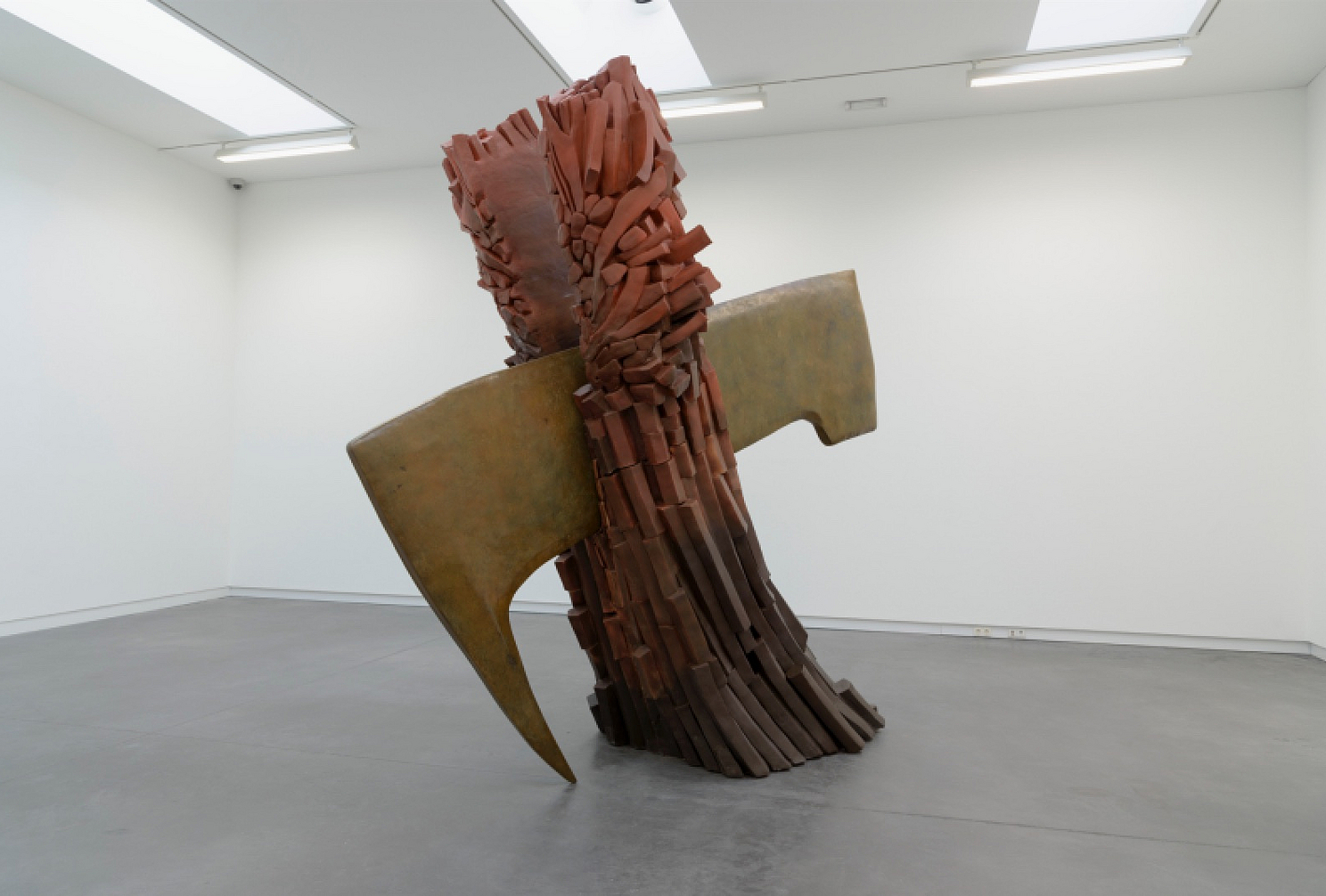Eylem Aladogan
The Arch of Belief
21 Jan - 26 Mar 2017
A solo presentation of work by Eylem Aladogan (Tiel, 1975) is a rare occasion. For the exhibition at De Pont she has produced a new monumental sculpture, Heart of Steel (Fire at Will). An exciting project in which a range of materials, such as ceramic and bronze components made in different workshops, are combined into a whole. And for the first time she is showing ‘found footage’, consisting of photographs that she has reworked. These give the three-and-a-half-meter-tall ceramic and bronze mammoth an added level of meaning.
The confrontation of opposing forces constitutes a theme throughout Eylem Aladogan’s oeuvre. Willpower, for instance, often arises from fear: the two forces can enhance each other. The violence that can accompany this had already been tellingly portrayed in Listen to your soul, my blood is singing iron triggers that could be released (2009-11). In this work the barrels of aggressive upwardly aimed rifles transform into an elegant feather headdress of wood. Shown at the Istanbul Biennial in 2011, the sculpture refers to the need for change, as Aladogan explained at the time: ‘...change always causes fear. For me, the rifles reflect both fear and strength at the same time You can say that without death there is no urge to survive. We need fear to trigger inner growth.’
The wave-like shape of the new sculpture now being shown at De Pont is reminiscent of Listen to your soul. A visit to Yosemite National Park in California became a significant source of inspiration for the work. Aladogan was particularly impressed by a rock face which had a deep chasm in it. It was, she writes, as if ‘the hand of God had chopped into it with a giant axe.’ Also the memory of a rigid pattern of basalt pillars in Iceland has left its marks. Due to the presence of sulphur and iron, the basalt landscape turns into a blaze of color in sunlight.
The resurrection of Christ in a halo of bright reddish yellow, as depicted in the Isenheim Altarpiece (1512-16) by Matthias Grünewald, seems to be linked with similar natural phenomena. The terrific thrust with which Jesus rises from the dead casts the tombstone and sentries to the ground. In the background a man wearing armor attempts to break his fall with his sword. It was this very figure that intrigued Aladogan. Gravity and willpower – force and counterforce – hold each other in balance for a fraction of a second. Heart of Steel has a similar field of tension: leaning forward, the sculpture’s fall is broken by the curved point of a giant bronze sickle, which has cleaved the heart in two.
When executing this ambitious sculpture, Aladogan did not avoid experimentation. It was covered with clay slip mixed with pigments in grey, brown and green earthen hues, which change into a glowing red sea of flames at the top. This terra sigillata technique has a more natural effect than a glaze. In order to achieve the desired range of colors with the various pigments (oxides of iron, copper and manganese which are also found in Icelandic basalt), the artist needed to gauge the firing temperature very precisely.
The colors of the sculpture crop up again in the embroidery techniques that Aladogan used to rework a late-nineteenth-century black-and-white photograph of two Armenian militia women. They have an indomitable appearance, with their big rifles and a piercing look in their dark eyes. Another photographic work, which has the pregnant title The disbeliever and the magic point where every idea and its opposite are equally true, is a collage of two photographs. Here an elegantly curved dagger follows the rounded lines of an Iranian mosque’s golden yellow vaulting. With these photographic works, current events make their debut in Aladogan’s oeuvre, but she emphatically takes no stance in this.
The works in the exhibition were realized with financial support of the Mondriaan Fund and Stichting Stokroos.
